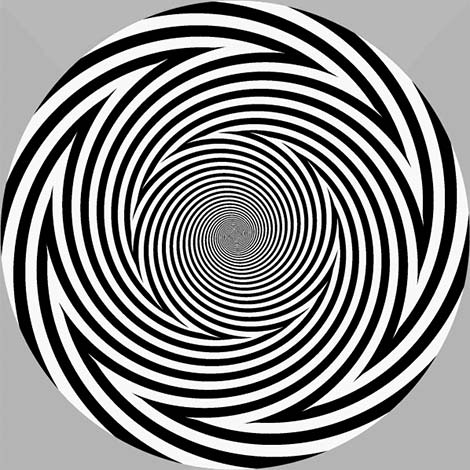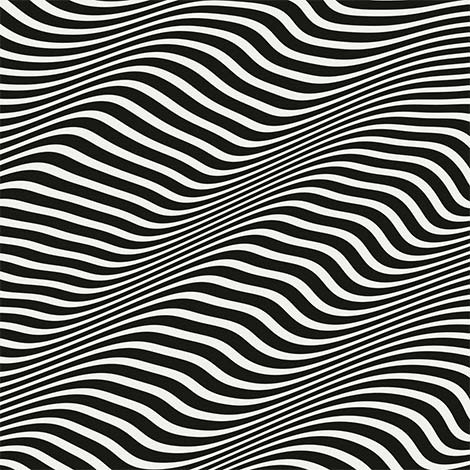Researchers use computer vision to better understand optical illusion
Optical illusion (Optical illusions) - images that can deceive the human eye, is a fascinating research topic for scientists for many years, simply because research on them can help provide more insightful and valuable in assessing people's cognitive abilities and cognitive abilities. Scientists at the University of Flinder, Australia, recently conducted a very interesting study, involving the use of computer vision (computer vision) models to make predictions about the existence of optical illusion and their degree of influence on human perception.
Over the past decade, researchers have gained quite a lot of biologically detailed insights into how the human brain processes visual stimuli. Many current computer vision models have also been inspired by existing insights into image processing. However, some other aspects of image processing are still not well understood and cause conflicts between many scientists.

- 13 optical illusions make you not believe your eyes
According to the researchers' explanation in the paper published in arXiv scientific journal, visual processing begins with the sensation of areas receiving information on the retina (RF) through light eye. In it, retinal ganglion cells (RGCs) are neurons responsible for processing signals that the retina receives, namely switching from internal plexiform layer information (IPL) and bearing That visual signal reaches the brain. The variety of RGC types and the size dependence of each specific type of eccentricity (distance to the eye hole) is physiological evidence that shows the ability to encode multiple images of the retina in the retina. Therefore, low-level models of retinal vision were proposed based on simultaneous sampling of visual images at various scales.
The research conducted in the past introduced a model to detect illusion angles in the illusion Café Wall (Café Wall illusion), arising from the contrast of the background and tilting signals. In their research, scientists at the University of Flinder generalized this method to cover a wider range of geometric illusions, as well as complex illusion (tile illusions) complex. more trash.
"We discovered the response of a simple low-level visual model of biology to geometric / edge illusion, reproducing the illusion misunderstanding of geometry that was reported in the school. Cafe Wall and some other illusions about aligning, but this model has so far not been verified to be able to generalize to other illusions, 'scientists said.

In their study, scientists evaluated a computational filter model designed to model the inhibition of retinal ganglion cells and their response to different geometric hallucinations. . By applying this method, scientists hope to gain a clearer understanding of these illusions, as well as predicting how they are affected.
"Although the misunderstanding of orientation in inclined illusion (tilt illusions) in general may suggest physiological explanations regarding selective orientation cells in the cortex, but our work will can provide evidence for a theory that the incidence of inclination in these samples is started before the cells choose to work, as a result of simple hammock cell coding mechanisms epithelium / cortex is known '.
- 7 natural visual illusions that trick the world's most famous eyes
In general, the findings collected in this study show the difference of Gaussian (DoG), a filter that detects edges in the image, at many scales can help explain the tilt in the virtual Stacking images, and at the same time can also help detect some hallucinogenic signals that are perceived when looking at geometric illusions. In addition, researchers can also link bottom-up and cognitive processes at a higher level, in a way that is consistent with David Marr's theory of vision and edge detection capabilities.
Current computer vision models for analyzing geometric illusions are complex, so they may be more difficult to apply in studies, and according to scientists, future studies should be attempted. try to provide less complex and biologically more sophisticated methods for detecting visual cues.

"We believe that further research on the role of simple Gaussian-like models in low-level retinal processing, Gaussian multiplication in early-stage DNNs, and the prediction of loss of hallucinations will lead. to more precise computer vision techniques and models, and also to control computer vision toward or away from features that humans have discovered. contribute to the development of depth models and handling motion at a higher level, as well as generalization for computer understanding of natural images. "
- The following 12 optical illusion photos will make you dazzle
You should read it
- 7 natural visual illusions that trick the world's most famous eyes
- You will be dizzy and dizzy when viewing these 9 images
- The most amazing optical illusions 2021 make you lose faith in your eyes
- The following 12 optical illusion photos will make you dazzle
- 13 optical illusions make you not believe your eyes
- The visual illusion that makes the black and white image into this color will confuse you
- Why does the Moon look bigger and closer when it is at the horizon?
- Simple objects that can create optical illusions confuse viewers
- Download Nature Illusion Studio, a stunning natural effects app for $ 25, free
- Decode the ball mystery itself 'climb the slope' at the 'non-gravity' hill
- Stop 'illusion' as a dragon, be a tiger ... work hard like ants and live freely like butterflies
- Incredible truth: Many applications intentionally run slowly to keep users waiting
May be interested

Chrome added policy to allow the admin to uninstall the blacklist extension

Samsung is preparing to launch the first Galaxy camera pop-up, which can be rotated 180 degrees

Acer unveiled information about new high-end ConceptD laptops, exclusively for creative people

Huawei introduced the world's first 5G hardware system

Intel unveiled a powerful 9th generation H series CPU for gaming laptops

Microsoft now allows answering and managing Android text messages in Windows 10






 The following 12 optical illusion photos will make you dazzle
The following 12 optical illusion photos will make you dazzle What is Computer Vision?
What is Computer Vision? The most amazing optical illusions 2021 make you lose faith in your eyes
The most amazing optical illusions 2021 make you lose faith in your eyes You will be dizzy and dizzy when viewing these 9 images
You will be dizzy and dizzy when viewing these 9 images Nvidia's STEAL AI offers the ability to support inference for better computer vision models
Nvidia's STEAL AI offers the ability to support inference for better computer vision models How is Computer Vision used to detect phishing attacks?
How is Computer Vision used to detect phishing attacks?